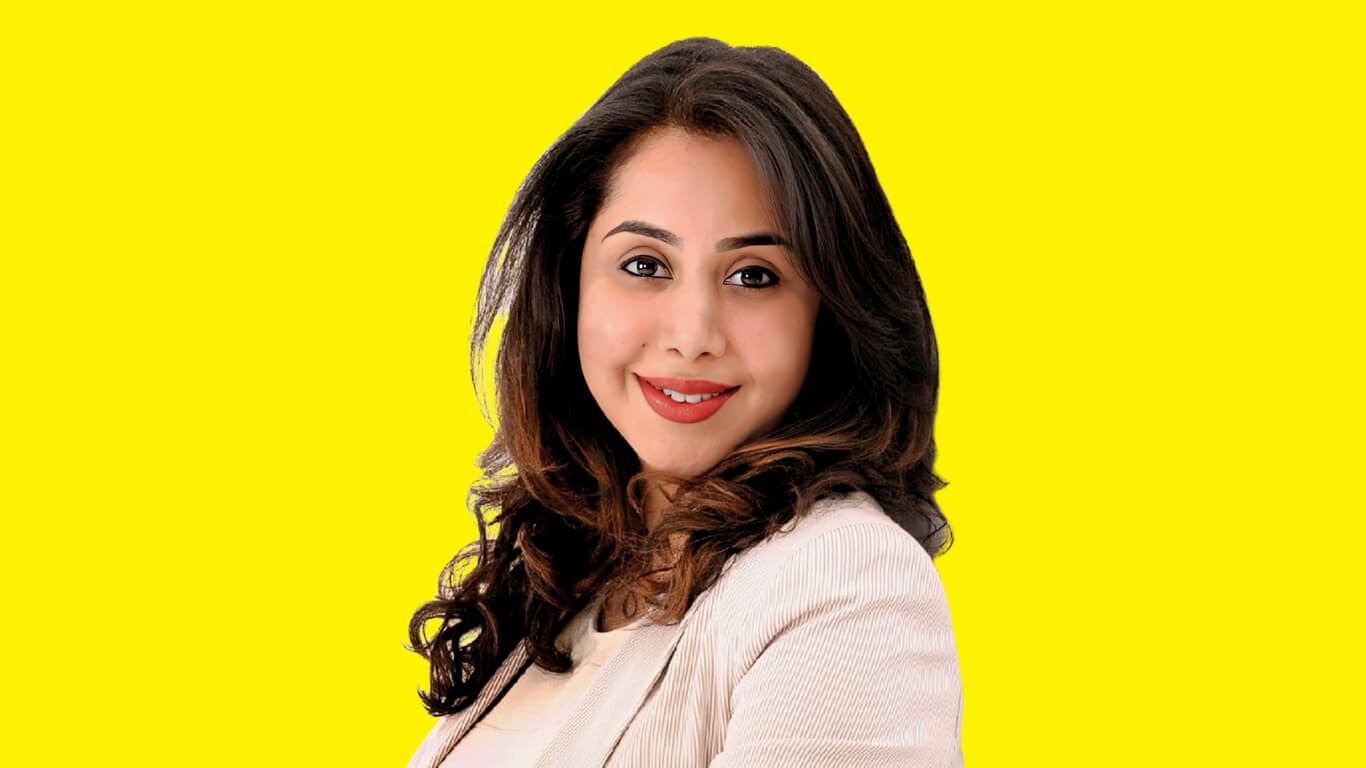


[ad_1]
After hitting 200 million users in India, Snap is hungry for more. The multimedia messaging platform sees a bigger story in India’s demographic, syncing with its core target audience

Some things, they say, are made for each other. Like cricket and Indian fans; peanut butter and chocolate; or smartphones and social media. Now add one more to the mix—Snapchat and India’s young population.
Asia is home to the world’s youngest population, while the core target for the multimedia messaging platform developed by Snap Inc. is the 13-34 age group; and India has a growing population in that particular demographic, and according to experts, is still an underpenetrated market in terms of social media. And India’s community of Snapchatters—those who use the platform—is growing. Snap, which had entered the country in 2019, announced last year that it had crossed the milestone of more than 200 million monthly active users. What is of note is that “almost all of that growth has taken place in 2-2.5 years in the face of very intense competition” says Ajit Mohan, the company’s President (Asia Pacific), sitting in the company’s low-key office at Mumbai’s Bandra Kurla Complex. Snap reported that its operating revenue from the India operations doubled from Rs 32.7 crore in FY21 to Rs 65.78 crore in FY22, according to data from the Registrar of Companies and business research platform Tofler.

” Growth has taken place in a short period and a lot of effort has been on shaping the product… We have not done enough to build the business and that is now a big focus area “
Ajit Mohan
President (Asia-Pacific)
Snap Inc.
And the future, say analysts, looks promising for Snap in India. “There is the large demographic of a young population and that aligns nicely with Snap’s target segment. That means a large part of the next wave for Snap will come from markets such as India,” says Neil Shah, Research Vice President and Partner at Counterpoint Research, a global tech industry research firm. The engagement of this audience took off with TikTok in the pre-pandemic phase, before it was banned by the Indian government. “It was later replaced by Instagram and Snapchat. Not only did we see more users moving to Snap, but also a growing community of content creators, influencers, developers and media partners flocking to these platforms,” he adds.
While a clear definition of the demographics and Snap’s expertise in augmented reality (AR), have helped grow the user base, an India-specific strategy is gathering momentum. Mohan, who has had stints with Disney and Meta, says the focus is on growing the business and not missing the opportunity in the country.
In the world of social media, an idea needs to not just be unique but must have the ability to scale up and be relevant. That is quite a task and innovation can make or break a product. Mohan would know. After all, he witnessed up close Instagram’s growth in India during his stint with Meta. Snapchat, as a platform, was built to provide an alternative to social media, says Mohan. Its privacy feature (its ephemeral nature means messages disappear in 24 hours) is a big draw. “We don’t record every conversation we have with our friends when we’re hanging out with them. Therefore, making conversation online, and more similar to real world conversation, is one of the reasons why people love Snapchat,” explains Snap Co-founder & CEO Evan Spiegel, who founded the platform with friend Bobby Murphy in 2011.
Snapchat’s core target is the 13-34 age group (depending on the country, 45-55 per cent or even 60 per cent of its users are not on any other platform) and they “easily understand privacy and visual plus they think it’s fun”, says Mohan, who expects Snapchat to be one of the fastest growing consumer tech platforms in the country.

Plus, the demographics play to Snap’s advantage, differentiating it as a platform and making it more appealing to the youth, says Mohan. “Nowhere is it truer than in India, and now the renewed focus on privacy works to our advantage.” For the user, Snapchat is unique for several reasons—the app opens to the phone’s camera, of course, followed by the AR experience, the map or content feeds on Discover (a news feed) and Spotlight (that showcases user-generated short-form videos). Mohan speaks of the intense competition for each of these in India and “we have still grown”.
“Snap is quite differentiated when it comes to how young people engage on the platform via Stories, AR Filters, Visual Messaging, Spotlight, AR Commerce, and AI Messaging—which are some of the highly engaging features and more advanced than its nearest and biggest competitor Meta,” says Counterpoint’s Shah, adding that India’s target audience is “tailor-made” for Snap.

” With a sizeable user base of over 200 million plus our leadership in AR, we want to monetise effectively building a robust business foundation “
Pulkit Trivedi
Managing Director (India)
Snap Inc.
If India is a unique market, the Snapchat story is proof of that, says Mohan. Spotlight, he says, has “exploded” and looks different here, where one is seeing younger creators and more real stories as opposed to curated ones. “Plus, growth has taken place in a short period and a lot of effort has been on shaping the product in terms of localising it, engaging with creators or just trying to understand what works here. We have not done enough to build the business and that is now a big focus area,” says Mohan.
Shah agrees, adding that the focus for Snap will be more about getting ahead with localised content and a highly engaged community, including that of creators. For instance, rival Instagram has focussed on the creator piece to its advantage; it helps that with a larger community, its creators have a higher potential to earn from the platform. But India is a very different terrain in terms of ARPU (average revenue per user or quarterly revenue divided by the daily active users) numbers. Shah says Snap here will go into, what he calls, a “flywheel effect”—the momentum when small wins accumulate over time creating significant growth—if its strategy is localised. “Obviously, the ARPU of around $8 per quarter in the US will not be seen here, but the scale can be unprecedented. Investors eventually will take to the monthly active user and daily active user numbers coming from India.”

Advertising is snap’s bread and butter (it accounts for 99% of its revenue). Marketers pick Snapchat as an effective engagement platform to reach out to a very critical target audience. Calling it the “elusive youth demographic”, Chandrika Jain, Director (Marketing) at Lenovo India, picks out a few areas that make Snapchat stand apart. “Leveraging its ephemeral nature from a brand-building perspective, short-form content-based ads (6 seconds or 15 seconds) seem native to run on the platform. With short-form video ads, brands can get up close and personal with their audience, build trust and showcase their catalogue,” she says.
In a market environment where social media firms fight for attention and consequently revenue, the ability to stand apart is key. Jain points out that Snapchat scores in addressing a highly engaged base of around 200 million monthly active users and “providing a good ad experience”. Also, the use of innovative technologies like AR helps in the ad experience. “It enables brands to create engaging and impactful campaigns that transform consumer interactions.”

” Leveraging its ephemeral nature from a brand-building perspective, shortform content-based ads (6 seconds or 15 seconds) seem native to run on the platform “
Chandrika Jain
Director (Marketing)
Lenovo India
A specific instance of how advertising worked on the Snapchat platform comes from Dushyanth Jayanty, Flipkart’s Vice President (Marketing). Its Flipgirl campaign (unfurled in mid-2022) with Hindi actor Alia Bhatt reached 24.5 million Snapchatters. “We harnessed the AR lens and redefined the shopping experience and turned it into an immersive and interactive journey,” he explains. According to him, what was achieved was Snapchat’s effectiveness in a more meaningful engagement with the younger GenZers in an innovative ad format.

According to Mohan, Snapchat’s performance marketing model—defined as a type of digital marketing where businesses only pay for results such as leads or sales, rather than for the placement for their ads—is taking off well in India. “We are already relevant to brands with our 13-34 audience. Equally, the transition to online means work done on product and engineering will help us in India too,” he says. There is an audience base that is yet to go online and he thinks there is a good chance they may first come to Snapchat. “Advertisers get the performance marketing model with a clear understanding of the value it brings. The agenda for the India team is to move from 200 million to 500 million as soon as possible.” From a strategy point of view, the focus has not been so much on revenue but rather on growth in terms of more users and more engagement. In terms of the advertising mix, it has consumer goods, entertainment, e-commerce, and financial services to name a few. “Parts of e-commerce with a focus on the young communities or beauty, apparel, health will have a disproportionate share on Snap,” says Mohan.

” Snap is quite differentiated when it comes to how young people engage on it via Stories, AR Filters, Visual Messaging, Spotlight, AR Commerce, and AI Messaging “
Neil Shah
Research Vice President and Partner
Counterpoint Research
The surge in digital advertising revenue in India has sustained on a large base. For 2022, it stood at Rs 57,100 crore from Rs 30,800 crore in 2019, according to the FICCI-EY Media and Entertainment Sector Overview 2022. Today, the lion’s share is with Google at just under Rs 25,000 crore, with Amazon India accounting for over Rs 4,000 crore, and Flipkart around Rs 2,000 crore. Industry executives insist the market size could be a lot more since advertising from smaller entities is not necessarily accounted for.
“India is at a very interesting phase of digital adoption and it is at a tipping point across most sectors in the internet economy. The rise of online commerce, digital payments and its digital services on the back of higher smartphone penetration and rising per capita income will drive the growth of digital advertising in India,” says Pulkit Trivedi, Managing Director (India) at Snap Inc. There are over 750 million internet users, upwards of 220 million online shoppers and more than 350 million digital payment users, per reports. “India remains a substantial and expanding market for digital ads and that is a massive opportunity. With a sizeable user base of over 200 million plus our leadership in AR, we want to monetise effectively building a robust business foundation,” he adds.

The bet is on the user base sticking on to Snapchat as they get older. Mohan points to this being the phase when consumers are at an early stage of engaging with AR. On Snapchat, consumers could try on clothes or shoes for instance. “Imagine using AR to try out a shoe in a particular colour or with a look and that can be a game changer,” he says. From a monetisation point of view, the performance marketing model will be a big pillar, but “we can always bring in AR”. Trivedi says some building blocks are needed in India to drive user growth, enhance engagement and boost content consumption. “We must serve our partners with effective advertising products to build a business for Snap in the next 5-10 years,” he adds.

But there will be challenges. “There will be strong market forces and lobbying from stronger competitive forces that are after the same pie and business model of content-based advertising and marketers’ wallets,” says Shah, adding that building a strong community is what Snap should focus on. “For Snap, it’s about getting ahead with localised content or its community to drive that flywheel effect, apart from managing a dynamic policy and regulatory environment,” he says.
However, India is a big opportunity. Shah points out that of the 600 million smartphone users, over 50 per cent (upwards of 300 million) engage on social media. Higher smartphone penetration can take that number closer to 500 million. “The overall addressable market in India for Snap by the end of this decade is close to a billion users. With an ARPU of even $1 per quarter, that is $4 billion, which is how much Snap makes globally.” If that story plays out, we could well see the emergence of India as a huge market for Snap Inc.
x
UI Developer : Pankaj Negi
Creative Producer : Raj Verma
Videos : Mohsin Shaikh
Photos: Bandeep Singh
[ad_2]















